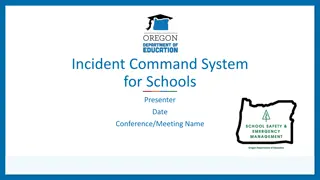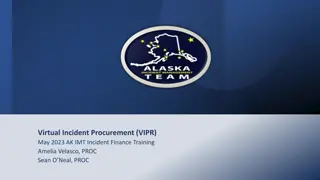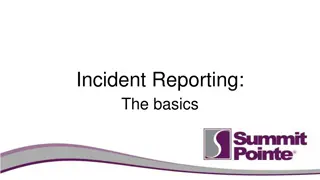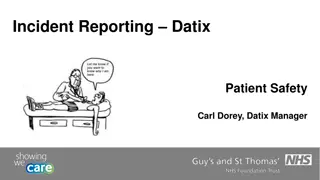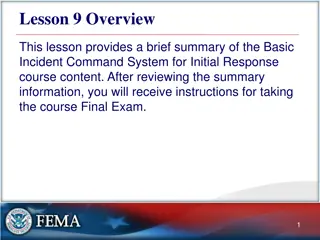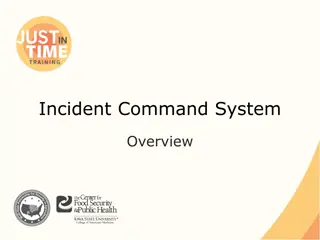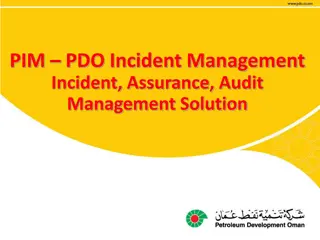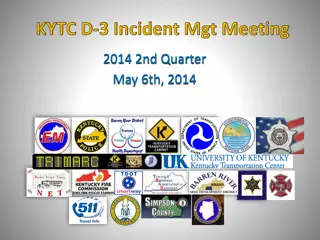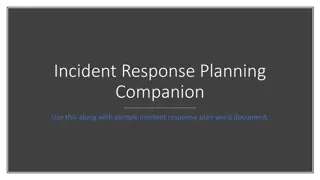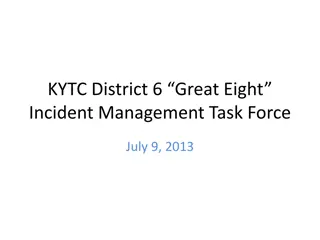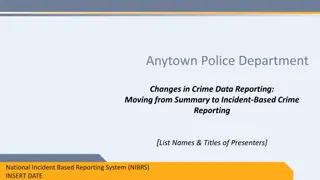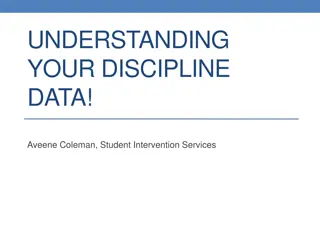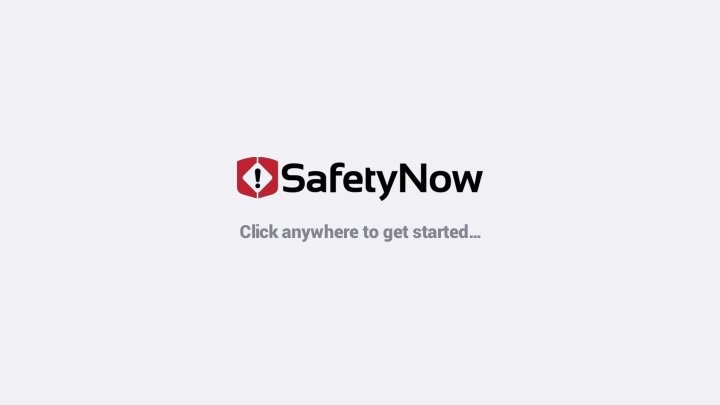
Promote Workplace Safety Through Effective Incident Reporting
Proper incident reporting is crucial in maintaining a safe work environment. This content emphasizes the importance of incident reporting to prevent workplace accidents and promote a strong safety culture. It covers topics such as differentiating between accidents and incidents, the significance of reporting all injuries, near-misses, and minor incidents, as well as the process of incident reporting, training employees, and following up on reported incidents.
Download Presentation

Please find below an Image/Link to download the presentation.
The content on the website is provided AS IS for your information and personal use only. It may not be sold, licensed, or shared on other websites without obtaining consent from the author. If you encounter any issues during the download, it is possible that the publisher has removed the file from their server.
You are allowed to download the files provided on this website for personal or commercial use, subject to the condition that they are used lawfully. All files are the property of their respective owners.
The content on the website is provided AS IS for your information and personal use only. It may not be sold, licensed, or shared on other websites without obtaining consent from the author.
E N D
Presentation Transcript
Whats at Stake? The term accident has been used often in the past referring to an unplanned, unwanted event. But OSHA suggest that nearly all worksite fatalities, injuries, illness are preventable. The term incident is the appropriate term when referring to these events.
Whats the Danger? Incident reporting of all injuries including close calls is critical to the integrity of the workplace. Hi lite The workplace is even at greater risk for a more serious incident to occur in the future if a minor incident or near miss is ignored or not reported. Without completed incident reports, companies cannot protect themselves from lawsuits. Employee participation in workplace safety improvement strategies will not be encouraged if incidents are not reported. A strong safety culture will not be fostered if incident reporting is relegated to the trash bin.
How to Protect Yourself INCIDENT REPORTING All incidents, near-misses and injuries should be reported immediately. When in doubt, file an incident report. INCIDENT REPORTING TRAINING All employees should be trained on the incident reporting process for their company. Ideally, this training is included as part of the on- boarding process for every employee.
How to Protect Yourself INCIDENT REPORTING PROCESS Some companies may require employees to report directly to HR or their immediate supervisor to file a report. Others may have a very convenient online reporting system. A company should provide a standard incident report form that every employee knows how to locate and any employee can complete and submit.
PAST INCIDENT REPORTING Following the company s incident reporting process, there should be an interview with the employee to ensure all the facts have been collected, the form is complete, and the nature of the incident is fully understood. The incident reporting follow-up process should include an investigation into the incident, medical care provided to the employee (if needed), corrective actions implemented immediately and preventive actions implemented as deemed necessary to prevent future incidents of the same nature. How to Protect Yourself
Final Word Incident reporting is critical to a successful workplace safety and health program. Do your employees know how and when to submit an incident report?


